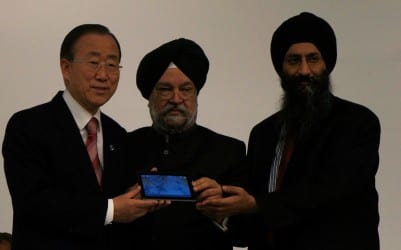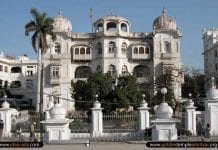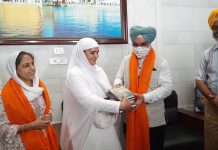


New York— India’s first Aakash tablet proved that it was possible to build a $35 tablet for low-income students. But with the Aakash2, which officially launched today at the United Nations, India has delivered an extremely cheap tablet that you may actually want.
We’ve already had a (very favorable) in-depth look at the Aakash2. But now India, and its manufacturing partner Datawind, has to convince the rest of the world that it has learned from the issues with the first Aakash, which was difficult to use because of its slow hardware.
From the specs alone, the Aakash2 is faster and more capable than its predecessor. It features a 1 gigahertz processor and 512 megabytes of RAM. That’s the same CPU speed of the first iPad and twice as much RAM, Suneet Sing Tuli, Datawind’s chief executive, made sure to note today. The Aakash2 also features a capacitive touchscreen (so it feels as smooth as modern tablets), a bigger battery, and a front-facing camera for video conferencing.
“There is a reason places like Hyderabad are called ‘Cyberabad,’” UN Secretary General Ban-Ki Moon said today. “But we know technology is not an end in itself. The key is to empower people to make the most of their own potential.”
He added:
“Information and communications technologies are engines of economic growth and development and can help transform people’s lives. They are great enablers — helping people communicate across distances, facilitating trade and commerce and providing better access to health care and education.”
The Aakash project was initially conceived as a way to squash illiteracy among India’s students, no matter their family’s income. Indian Ambassador Hardeep Singh Puri noted today that the country has 361 million children who should be in school, but only 219 million are actually enrolled.
Even for those in school, the quality of education in India is also directly correlated with their distance from a city. The Aakash tablet could be a tool that increases education quality, and potentially tempts more students to schools as well.
“Our challenge is to leverage the power of technology and bridge the digital divide,” UN Secretary General Moon said. “We need to do more to help all children and young people make the most of the opportunities provided by information and communications technology – especially all those who are still unconnected from the digital revolution.”





It nice to see a sikh [ with Turban ] greeted by UN Secretary General.
Congrtulations.
I hope Aakash2 within the poor students of PUNJAB who are
been deprived of Education generally I mean SIKHS.